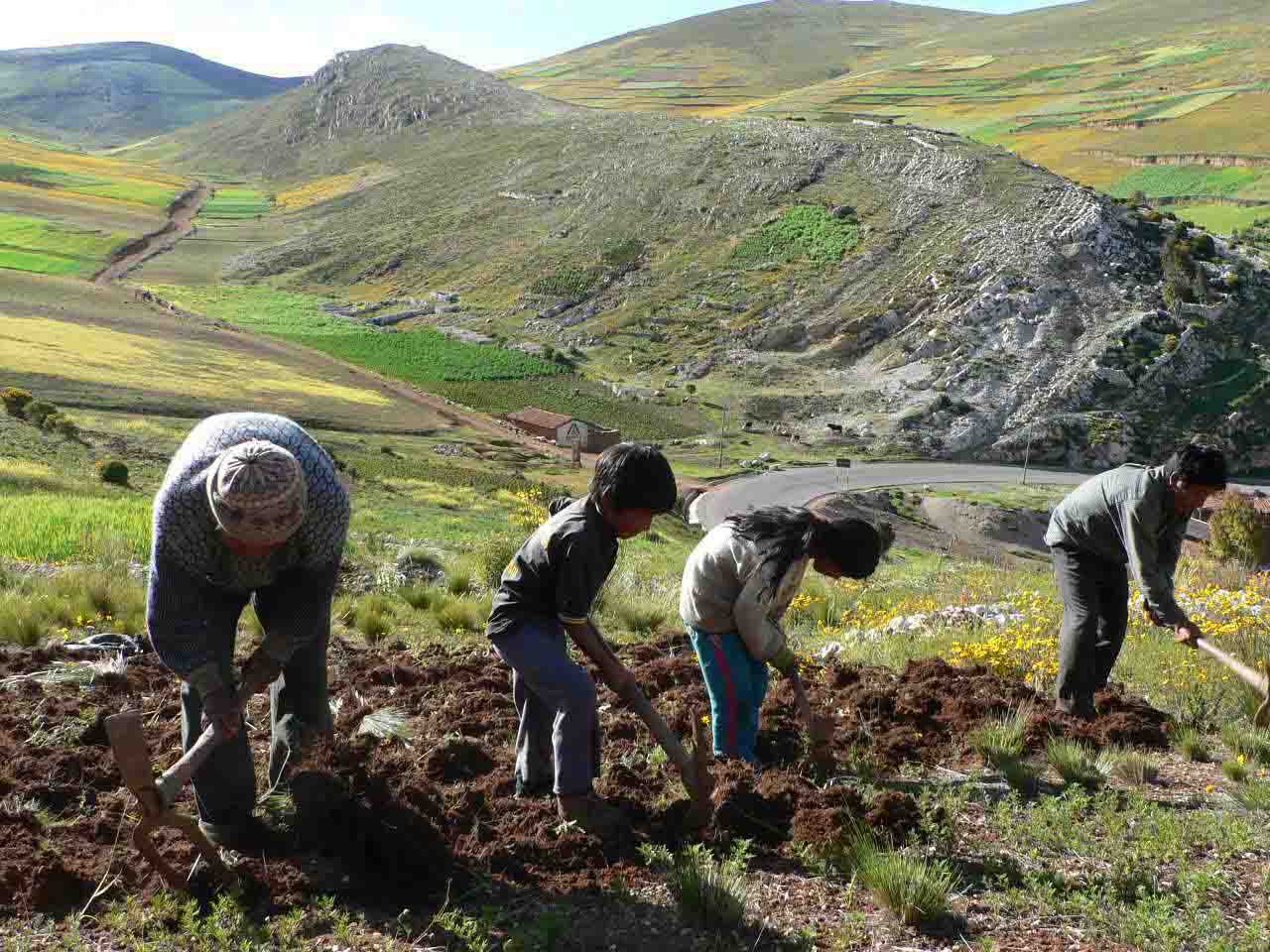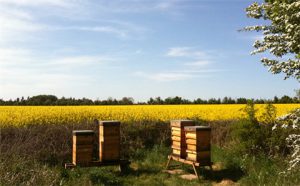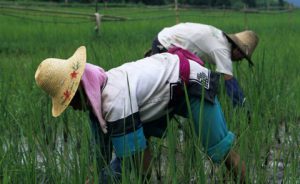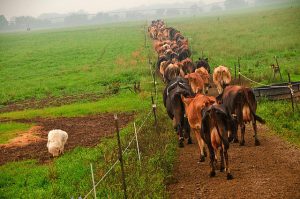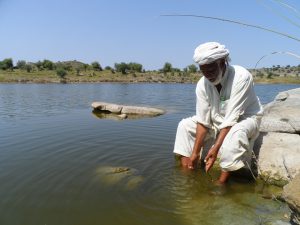GRAIN, an international NGO, which supports small farmers and sustainable agriculture
Researchers estimate that between 44% and 57% of all greenhouse gas emissions (GHGs) come from the global food system. Agriculture and deforestation caused by agriculture account for 26-33% of total emissions, making it a major contributor of climate change.
Chemical fertilisers are the main source of climate-changing gases. No country uses more of them than China, which now accounts for a third of global fertiliser use. These are mostly nitrogen fertilisers, which are produced from coal. The average Chinese farmer applies over 600 kilogrammes of chemical fertilisers per hectare — more than triple what the average farmer uses in Brazil and nearly five times that used in the US, where fertiliser use is also a growing problem.
Furthermore, only a third of the nitrogen fertiliser applied to China’s wheat and rice crops is absorbed by plants. The rest ends up in rivers or the atmosphere.
Fertilisers are responsible for numerous environmental and health calamities. Our research shows that, because of its destructive impacts on soil fertility, fertilisers are contributing to dwindling yields. Over the past 40 years, the efficiency of nitrogen fertilisers has decreased by two-thirds globally, and their distribution per hectare has increased by seven times.
Kicking the fertiliser habit will require more than a technological fix. For decades, global agricultural policies and research and extension programmes have focused on a ‘Green Revolution’ model of farming [large-scale crop production], based on a narrow set of seed varieties that only produce high yields when doused with fertilisers and pesticides.
The Green Revolution was implemented throughout Asia but the most emblematic cases would be India and the Philippines. In China, farmers can achieve similar yields without chemicals using agro ecological practices but they will need a lot of support in rebuilding their systems of farmer knowledge and of diverse seeds. They also need access to land.
Throughout Asia, the mass migration of peasants to urban centres has been driven by industrialisation and policies favouring imported foods and agribusiness companies. Just 6% of Asia’s farm owners hold around two-thirds of its farmland.
In China alone, there are now over 120 million landless people, up from 40 million just ten years ago, and the overall rural population has dropped from 80% to less than half today. Rural poverty has worsened despite galloping national economic growth, and the richer urban population has faced a spate of food scandals and new health issues, such as bird flu and obesity.
Some of the problems caused by China’s shifting food system are now being exported to countries like Brazil and Indonesia, where the expansion of plantations to provide China with soybeans and palm oil has caused deforestation, pesticide pollution and violent land conflicts.
At home, agribusiness and meat corporations have boomed; small farms and local butchers have been decimated. Take the case of China’s most important meat, pork. Through the 1980s and 1990s consumption of pork increased markedly, and that demand was supplied by small farmers, raising “backyard” pigs. Environmental problems were limited because these pigs were largely fed with household waste and local crops and farmers earned an important additional source of income that helped sustain rural communities.
But by the end of the 1990s, production shifted towards large factory farms that rely on imported feed crops and that generate tonnes of fecal waste and disease outbreaks, not to mention greater GHG emissions and rural exodus.
The situation is similar in other Asian countries and with other farmed animals. In the Philippines, for example the entire supply of chicken and eggs came from small farms forty years ago, but today 90% of the chicken meat in the country is imported or produced on large, factory farms.
For more information read GRAIN’s new book, The Great Climate Robbery. See website for details.
Linus Blomqvist, director of conservation and a member of the Breakthrough Advisory Board
Farming, in many parts of the world, has become increasingly intensive and large-scale. But it would be a mistake to blame the intensification of farming for rising emissions associated with food production. In most cases, intensive, high-input crop and livestock systems emit far less GHG per unit of product than do their more extensive, low-input counterparts.
The GHG savings are particularly evident when it comes to cattle, which accounts for a majority of greenhouse gas emissions in farming, in the form of methane generated during digestion, as well as nitrous oxide and methane from manure. More intensive systems, where forage is partly substituted by grain-based concentrates, reduce emissions in several ways. The faster growth of cattle means less land, feed, and other inputs are needed for a given amount of beef or milk. Grains are also more easily digestible by cattle than forage, which means less methane is generated in their stomachs.
The impact on emissions is impressive: intensive beef and dairy production in Europe and North America emits fewer GHGs per unit than do less intensive systems elsewhere. For example, producing one gallon of milk in Sub-Saharan Africa generates nearly six times more GHGs than in North America.
Developed countries, with more intensive farming systems, are more climate-friendly than their extensive counterparts: organic, grass-fed livestock systems generate 68% and 13% more GHGs per unit of beef and milk, respectively, compared with conventional systems.
Increased adoption of intensive systems globally therefore has enormous potential to reduce GHGs from livestock, according to research published by science journal PNAS, both from production and from carbon emissions associated with land-use change.
Intensification has similar benefits when it comes to crop production. Globally, GHGs emissions are outweighed by carbon savings from land sparing. Jennifer Burney, environmental scientist from the University of California, estimated that intensification has saved as much as 161 gigatons of carbon over the last 50 years, in large part by avoiding the extra deforestation that would have occurred had yields not improved.
Intensification has similar benefits when it comes to crop production. Intensive farming in Europe and North America uses relatively large amounts of energy and fertilizer, both of which cause greenhouse gas emissions, but these emissions are outweighed by the carbon savings from land sparing.
As a larger and growing share of global farming has adopted intensive practices, including tractors, synthetic fertilisers, pesticides, and feedlots, something astonishing has happened: the total volume of GHGs produced from farming, including production and land-use change, have plateaued.
Over the last four decades, production of crops and livestock has become 39% and 44% more GHG efficient, respectively. According to a new study published in the Global Change Biology journal, total emissions from global farming peaked in the early 1990s.
Many measures to enhance productivity and GHG efficiency can be applied smallholders that represent the majority of farmland in some regions. Rushing the transition to larger-scale, more industrial farming can have dire social consequences when there are few jobs in other sectors of the economy.
In China, farmers are increasingly adopting intensive practices in both the livestock and crop sectors. Will GHG emissions fall as adoption of intensive practices increases? It depends. Intensification can reduce emissions per unit of crops, meat, etc., but the total emissions are also determined by the consumption of those goods. So population growth and dietary change will play a big role.
In the long-term, the sorts of economic and social changes that will ultimately enable farmers to adopt the most GHG efficient technologies – such as economic growth, better infrastructure, and higher levels of education – are also likely to favor higher labour productivity and larger farm sizes. It is no coincidence that the most productive farming systems are often found where farms are larger and more mechanised, and where a smaller share of the population is involved in farming. As such, the future of climate-friendly farming lies in increasingly intensive, large-scale systems across the world.
